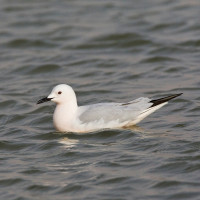Opis
El Racó de l'Olla is a permanent salty lagoon, very well preserved after the restoration from an environmental point of view, but specially for birds. 50 hectares formed by 4 lagoons of which 3 are a reserve area and one is visitable. One of the most important nesting colonies in Spain of rybitwa czubata, rybitwa rzeczna and mewa czarnogłowa are found here. But also special birds like marmurka, lyska czubata and modrzyk.
Szczegóły
Dostęp
From Valencia, take CV-500 direction El Saler, turn right in 10,5 KM direction El Palmar and turn left inmediately. There is also a bus (line 25) in Valencia. You can park just at the entrance of the Interpretation center. You can visit only walking. NOTE: Open every day from 9am until 2pm.
Teren i siedlisko
Jezioro , Tereny podmokłe , WydmyWarunki
PłaskiTrasa dookoła
NieCzy luneta będzie przydatna ?
NieUdany sezon obserwacyjny
Przez cały rokNajlepszy czas na wizytę
Zima , WiosnaTrasa
Szeroka ścieżkaPoziom trudności szlaku pieszego
ŁatwyDostępne
Pieszo , Wózek inwalidzkiCzatownia/platforma obserwacyjna
TakDodatkowe informacje
Especially suitable for birding with children. The route can be done in less than one hour, a path of approximately 1 km length ending in a hide.
The interpretation center also has a very nice observation tower to see the Natural Park (lake, forest, ricefields). Visitable from Monday to Sunday during the morning. Not necessary booking for groups of less of 15 persons. Entrance free. Telephone for booking 0034 96 386 80 50.
If you want to taste the great variety of cooked rice of this land, you are only 3 km from El Palmar village, one of the best places to taste the different types of "paellas" in Valencia.



